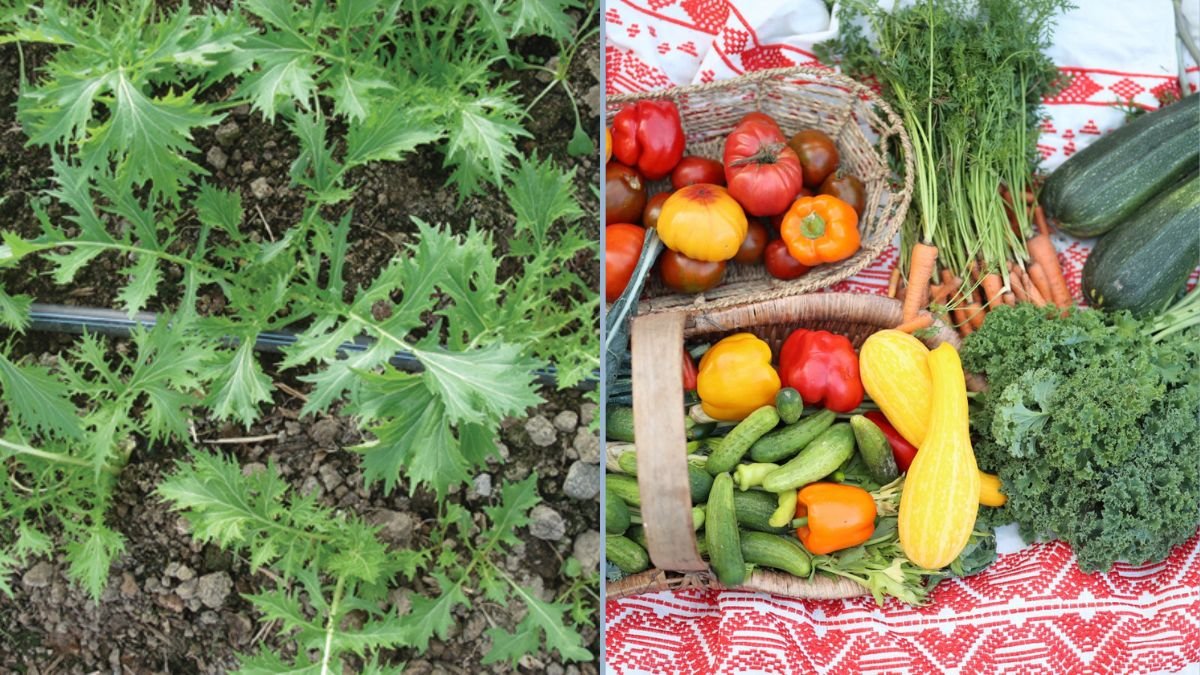Summer gardening provides an opportunity to cultivate fresh, nutritious salad greens that thrive under warm conditions. Fast-growing greens are particularly valuable during the summer months, as they allow gardeners to enjoy frequent harvests despite the challenges of heat, fluctuating moisture, and pest pressure. These greens not only supply essential vitamins, minerals, and fiber but also form the backbone of a sustainable, plant-based diet.
Growing salad greens successfully in summer requires careful plant selection, proper soil preparation, efficient water management, and organic cultivation practices. This article provides detailed guidance on selecting, planting, and maintaining fast-growing summer salad greens in a chemical-free, eco-friendly manner.
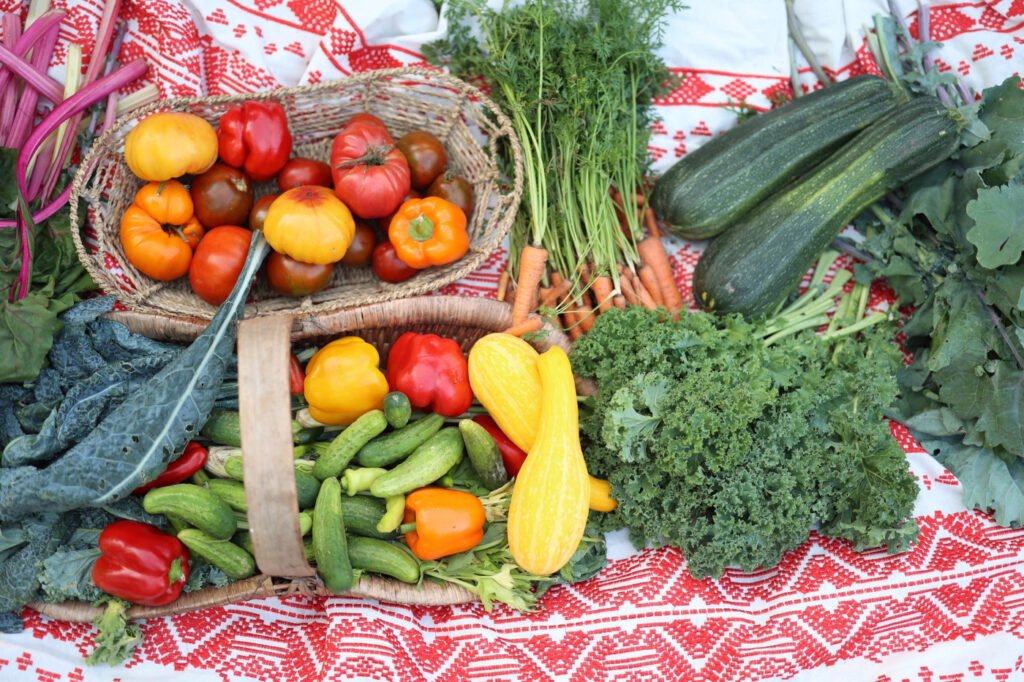
1. Selecting Fast-Growing Summer Salad Greens
Several greens are ideal for summer cultivation due to their rapid growth and heat tolerance:
a. Lettuce Varieties
- Leaf Lettuce: Loose-leaf varieties grow quickly, often ready for harvest in 30–40 days.
- Romaine: Offers crisp leaves and tolerates slightly warmer temperatures than delicate leaf lettuce.
b. Spinach Alternatives
- Malabar Spinach: Heat-tolerant vine with succulent leaves, ideal for summer salads.
- New Zealand Spinach: Thrives in warm weather, providing similar nutrition to traditional spinach.
c. Arugula (Rocket)
- Fast-growing, peppery leaves ready in as little as 25–30 days.
- Performs well in partial shade, reducing bolting during hot summer days.
d. Mustard Greens
- Quick-growing with spicy, flavorful leaves.
- Heat-tolerant and suitable for succession planting for continuous harvests.
e. Asian Greens
- Pak Choi (Bok Choy), Tatsoi, and Mizuna: Rapid growth and high tolerance to summer conditions.
Selecting heat-tolerant, fast-growing greens ensures continuous, high-quality harvests throughout summer.
2. Soil Preparation for Summer Salad Greens
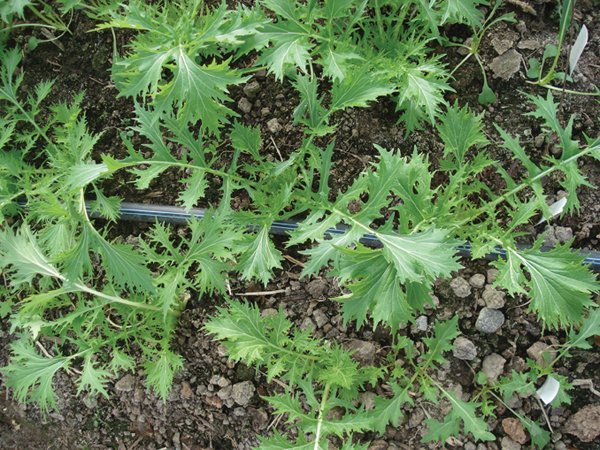
Healthy soil is essential for rapid growth:
- Soil Texture: Loose, well-draining soil promotes root development.
- Organic Matter: Incorporate compost, leaf mold, or vermicompost to enhance fertility and water retention.
- pH Range: Most salad greens prefer slightly acidic to neutral soil (pH 6.0–7.0).
- Aeration: Lightly loosen soil before planting to improve oxygen availability and prevent compaction.
Properly prepared soil encourages vigorous growth and nutrient uptake for fast-growing summer greens.
3. Planting Techniques for Rapid Growth
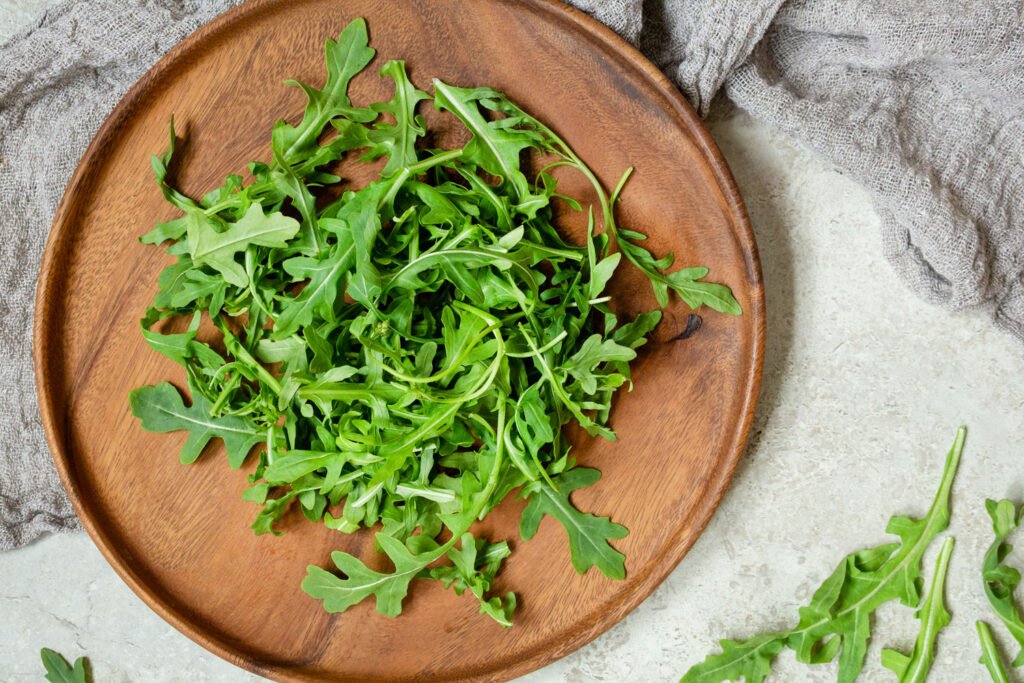
- Succession Sowing: Plant seeds every 1–2 weeks to ensure continuous harvest.
- Row Spacing: Maintain 6–12 inches between rows for optimal airflow and light penetration.
- Seed Depth: Sow shallow seeds (0.5–1 cm) for rapid germination.
- Container Gardening: Ideal for small spaces or patios; choose shallow containers with good drainage.
Effective planting techniques maximize growth rate and yield in summer conditions.
4. Light Requirements
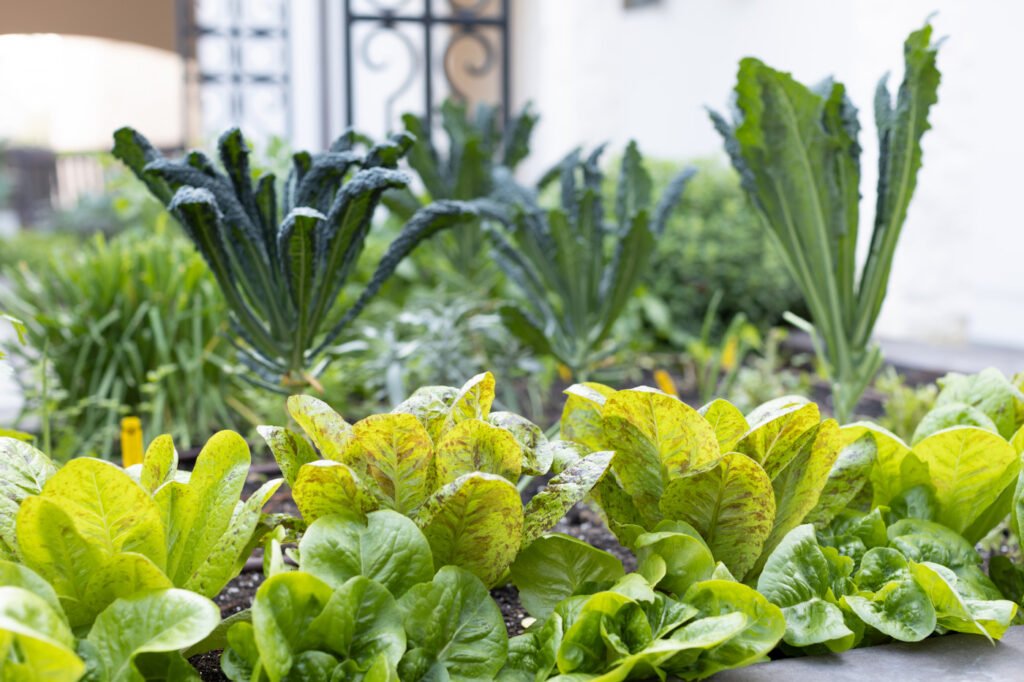
Salad greens require adequate light to thrive:
- Direct Sunlight: Most fast-growing greens need 4–6 hours of sunlight per day.
- Partial Shade: Leafy greens like lettuce and arugula benefit from partial shade during peak afternoon heat to prevent bolting.
- Indoor or Urban Gardening: Use supplemental LED grow lights if natural sunlight is limited.
Ensuring proper light exposure promotes photosynthesis, robust growth, and vibrant leaf color.
5. Water Management in Summer
Watering is critical during hot, dry months:
- Consistent Moisture: Keep soil evenly moist; avoid water stress, which slows growth.
- Early Morning Watering: Reduces evaporation and prevents fungal growth on leaves.
- Mulching: Organic mulch such as straw or coconut coir retains soil moisture and moderates temperature.
- Drip Irrigation: Efficiently delivers water to roots, minimizing waste and leaf wetness.
Proper water management supports fast germination and steady growth for summer salad greens.
6. Temperature Considerations
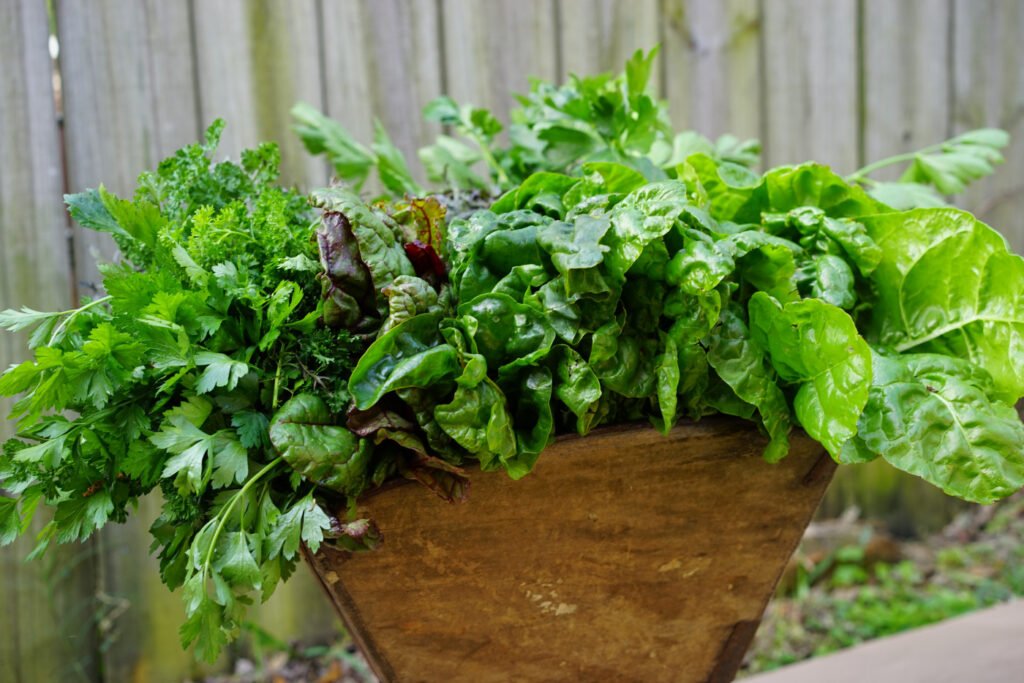
- Optimal Growth Temperature: Most salad greens grow best between 18°C–24°C (65°F–75°F).
- Heat Stress: During extreme heat, shade cloth or temporary covers can prevent leaf scorching.
- Bolting Prevention: Heat-tolerant varieties and partial shading reduce premature flowering, maintaining edible leaf quality.
Controlling environmental stress ensures continued rapid growth and high-quality harvests.
7. Nutrient Management
Fast-growing greens require sufficient nutrition:
- Compost and Vermicompost: Provide steady nitrogen for leafy growth.
- Plant-Based Liquid Fertilizers: Comfrey, nettle, or moringa teas enhance leaf size and nutrient content.
- Micronutrients: Ensure sufficient magnesium, calcium, and potassium through organic amendments.
- Frequency: Light fertilization every 3–4 weeks encourages continuous rapid growth.
Balanced nutrition accelerates growth and enhances flavor, color, and texture.
8. Pest and Disease Management
Summer conditions can increase pest and disease pressure:
- Common Pests: Aphids, leaf miners, and whiteflies target leafy greens.
- Organic Control: Neem oil, garlic sprays, and mild soap solutions are effective.
- Physical Barriers: Row covers prevent pest access while allowing sunlight and airflow.
- Disease Prevention: Proper spacing and pruning improve airflow and reduce fungal infections.
Proactive pest management ensures healthy leaves and uninterrupted growth.
9. Mulching for Summer Salad Greens
Mulching provides multiple benefits for summer growth:
- Moisture Retention: Keeps soil damp during high heat.
- Temperature Moderation: Protects roots from extreme heat.
- Weed Suppression: Reduces competition for water and nutrients.
- Soil Erosion Control: Prevents soil loss during summer rains.
Organic mulches contribute to soil fertility as they decompose, supporting continuous growth.
10. Succession Planting and Harvesting Techniques
Continuous harvest ensures year-round salad supply:
- Cut-and-Come-Again: Harvest outer leaves, leaving inner growth to continue producing.
- Succession Sowing: Stagger plantings every 1–2 weeks for a constant supply.
- Microgreens Harvest: Ready in 1–3 weeks, providing rapid, nutrient-dense leaves.
- Timing: Harvest in early morning for crisp texture and optimal flavor.
Succession planting maximizes yield and sustains fresh greens during the summer.
11. Container and Urban Gardening for Fast-Growing Greens
- Shallow Containers: Ideal for leafy greens with compact root systems.
- Vertical Planters: Maximize small spaces, especially for microgreens and herbs.
- Self-Watering Systems: Reduce the need for frequent watering in hot conditions.
- Windowsill Gardens: Provide easy access to light and fresh leaves.
Container gardening allows fast-growing salad greens to flourish even in urban or limited-space settings.
12. Companion Planting
Companion planting enhances growth and protects greens:
- Tall Plants for Shade: Sunflowers or corn can protect delicate greens from intense afternoon sun.
- Pest Deterrence: Herbs like basil, chives, or marigold reduce aphid and whitefly populations.
- Soil Improvement: Legumes planted nearby enrich nitrogen levels naturally.
Strategic companion planting improves growth rates, flavor, and overall plant health.
13. Benefits of Growing Fast-Growing Summer Salad Greens
- Quick Harvest: Ready in 3–6 weeks, providing fresh leaves for salads and smoothies.
- Continuous Supply: Succession planting ensures year-round availability.
- Nutrient-Rich: High in vitamins A, C, K, folate, and antioxidants.
- Sustainable Gardening: Organic cultivation reduces chemical dependency.
- Space Efficiency: Fast-growing greens adapt well to small gardens, containers, and urban settings.
Fast-growing summer salad greens contribute to both nutrition and sustainable food production.
14. Troubleshooting Common Issues
- Leggy Growth: Caused by insufficient light; provide supplemental lighting or reposition plants.
- Yellowing Leaves: May indicate nutrient deficiency or overwatering; adjust fertilization and moisture.
- Bolting: Heat stress triggers flowering; use heat-tolerant varieties and shade during peak temperatures.
- Pest Infestation: Implement organic sprays, barriers, and companion planting for protection.
Early intervention ensures rapid recovery and maintains consistent growth.
Conclusion
Summer provides an ideal opportunity to cultivate fast-growing salad greens that deliver fresh, nutrient-rich produce quickly and consistently. By selecting heat-tolerant varieties, preparing nutrient-rich soil, managing light and water effectively, and practicing organic cultivation methods, gardeners can ensure rapid growth and continuous harvest.
Succession planting, companion planting, and container gardening further enhance productivity and make efficient use of space. Organic pest management, mulching, and temperature control maintain plant health and quality throughout the season.
Fast-growing summer salad greens not only support a plant-based diet but also promote sustainable, chemical-free gardening. By implementing these strategies, gardeners can enjoy abundant, fresh, and flavorful greens throughout the summer months, even in challenging conditions.
